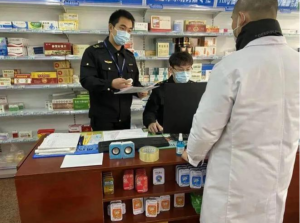
What is “white lung”? How to avoid pneumonia from new crown infection? Authoritative experts answer
Recently, some people have reported that some patients with NCCV have been found to have pneumonia or even “white lung” on lung CT during medical consultations. What is “white lung”? How to avoid pneumonia? The National Health Care Commission organized respiratory critical care experts, vice president of Beijing Chaoyang Hospital affiliated with Capital Medical University, and director of Beijing Institute of Respiratory Diseases, Tong Zhaohui, to respond to the public’s hot issues.
Q: Could you briefly introduce what “white lung” is and what measures are generally taken to treat it?
A: “White lung” is a colloquial description in clinical work, not having pneumonia is “white lung”. When medical personnel say “white lung”, they mean that the patient has severe pneumonia. In many cases, we do not call it “white lung”, but rather describe whether it is unilateral or bilateral, and whether it is superior or inferior. Only when the lung has 75% or more bilateral disease is it called “white lung”.
Recently, some patients have been seen with general pneumonia. For the very few patients with “white lung,” there are treatment options available. Whether it is severe pneumonia, hypoxemia or acute respiratory failure, we have a relatively mature treatment approach, and there are guidelines and strategies from international to national level.
Recently, from the treatment of heavy and critical patients in our designated hospitals in Beijing, the proportion of “white lung” or heavy and critical patients accounts for 3% to 4% of the current inpatient population. The treatment of respiratory failure caused by pneumonia is very mature clinically, as long as the diagnosis is timely, the doctor timely treatment, the use of oxygen, non-invasive ventilator, invasive ventilator, and then serious can also use extracorporeal membrane pulmonary oxygenator (ECMO), a considerable number of patients can be improved.
Q: How to avoid pneumonia due to untimely treatment of new crown infection?
A: Pneumonia occurs at a higher rate in the winter months. When young adults get pneumonia, their body temperature comes up immediately, they have fever, respiratory cough and sputum, and these symptoms are obvious, and they tend to go to the hospital in time. Older adults with pneumonia may not have a fever or may not have obvious respiratory symptoms. Some older adults also do not express any particular symptoms, and family members sometimes do not pay attention when they see that older adults do not have a fever or cough, which may delay medical attention.
The onset of pneumonia in the elderly is relatively insidious, and sometimes there are no obvious symptoms. You should not observe the elderly according to the reactions of young people such as fever, coughing and coughing up phlegm. Be aware that if an elderly person suddenly does not like to eat, is wilted throughout, or is drowsy, seek prompt medical attention. It is important to keep a close watch on the elderly.
Here are some other suggestions. The cold winter weather is also a high season for pneumonia, and even without a new crown, elderly people with underlying diseases are prone to get pneumonia. It is important to monitor the respiratory rate, whether there is chest tightness, shortness of breath and other symptoms. If the blood oxygen saturation is less than 93%, you should go to the hospital promptly.
Q: How to prevent and treat patients with chronic respiratory diseases in winter during the new coronavirus epidemic?
A: Not only chronic respiratory diseases in winter, such as chronic obstructive pulmonary disease, bronchiectasis, etc., but also cardiovascular and cerebrovascular diseases, are all highly morbid in winter and should be monitored and promptly treated.
Chronic obstructive pulmonary disease has a high proportion in our country, with more incidences in winter and more inpatients in emergency rooms and respiratory wards. The current epidemic of new crowns and cold weather will definitely trigger the onset or exacerbation of chronic obstructive pulmonary disease. Normally, patients with chronic obstructive pulmonary disease have low oxygen, they can take oxygen at home, and insist on medication during the stable period, while suggesting patients to go out less, which can avoid the exacerbation or attack of the disease. If the pneumonia induced slow obstructive pulmonary, wheezing aggravated, you should come to the hospital for timely treatment.


Average Rating